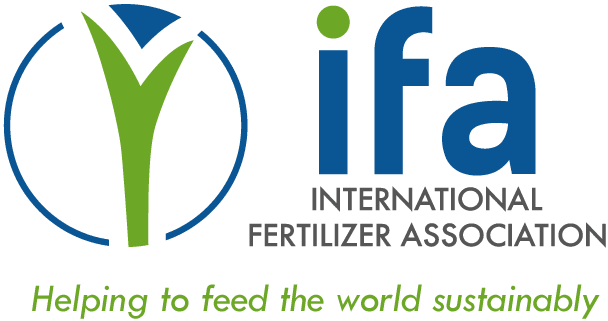Nutrient Management and Biodiversity
Agriculture, human health, climate change and biodiversity are all interwoven
I’ve worked in biodiversity conservation for around a quarter of a century. Whilst many of my conservation peers and colleagues have worked in cathedral-like rainforests and dazzling coral reefs, or on iconic species such as tigers, sea turtles and hornbills, I’ve largely been drawn towards the ecological interactions and conservation challenges that reside in fields, on farms and in agricultural landscapes. Why? Because we depend on food, but we also depend on biodiversity to drive the ecological processes that enable agricultural systems to function. And because food production and nature or biodiversity are so often presented in opposition to one another, when in fact they should be operating hand-in-hand. Here’s an example involving nutrient management in farming systems that illustrates the kind of conundrums that we have to resolve.
The world is facing many global challenges. These include several that are very much intertwined: i) producing enough nutritious food to feed an anticipated world population of 10 billion people by 2050, ii) rising rates of both undernutrition and overnutrition (Figure 1), and iii) accelerating environmental issues such as climate change and biodiversity loss. All of these issues are related to a global food system that has been repeatedly described as broken.
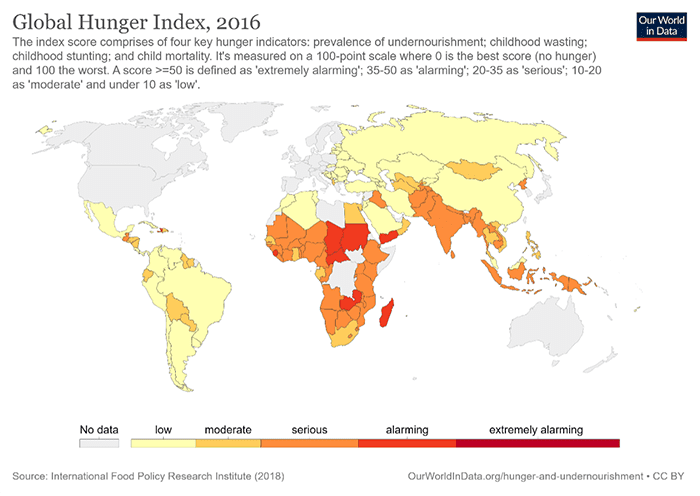
Figure 1: Global Hunger Index scores by country. Source: https://ourworldindata.org/grapher/global-hunger-index?time=2016
Agriculture and the environment have a particularly dependent relationship, with agriculture affecting the environment, and these environmental changes having knock-on effects on food production. For instance, food systems and land-use change produce more than a quarter of all greenhouse gas emissions, which drives dangerous climate change, which in turn reduces agricultural productivity and increases extreme weather that challenges farms, farmers and food supplies. Meanwhile, food systems are the biggest driver of biodiversity loss globally. This decline of biodiversity leads to the erosion of the benefits from nature upon which agricultural production depends, such as pollination and soil nutrient cycling. Each and every one of us is dependent, every single day of our lives, on these very same food systems — the need to find ways of reconciling food production and environmental sustainability is becoming increasingly urgent.
The role of fertilizer
One vital component of this complex jigsaw puzzle is that of nutrient management in agriculture. The use of fertilizer is integral to production and underpins the food and nutrition security of billions. It also has a complex set of interactions with biodiversity and the wider environment, and therefore has a bearing on agriculture’s broader environmental influence. The widespread use of fertilizers has raised crop yields many times over and helped to ensure food security across many parts of the planet. However, in some large parts of the world there remain persistent yield gaps (the difference between actual and potentially attainable yields—Figure 2).
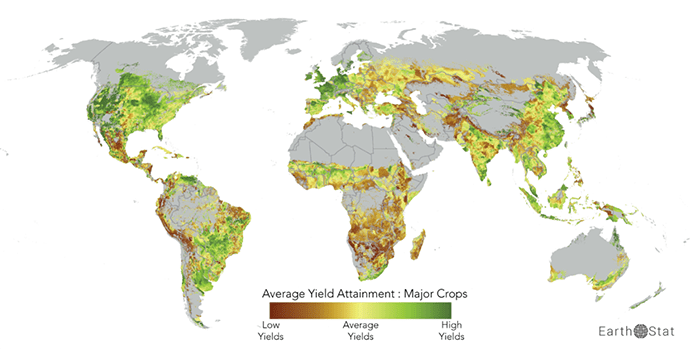
Figure 2: Source: http://www.earthstat.org/wp-content/uploads/YieldAttainmentMajorCrops_EarthStat.png
As well as undermining human nutrition and health, such yield gaps can drive the expansion of farmland, often at the expense of natural ecosystems. This generally results in considerable greenhouse gas emissions and biodiversity loss, as well as other issues such as soil erosion. As an example of potential future land clearing, the projected expansion of croplands, globally, are shown in Figure 3, with major expansion likely to occur in some of the most biodiverse countries in the world, such as parts of tropical and subtropical Africa, Malaysia and Brazil.
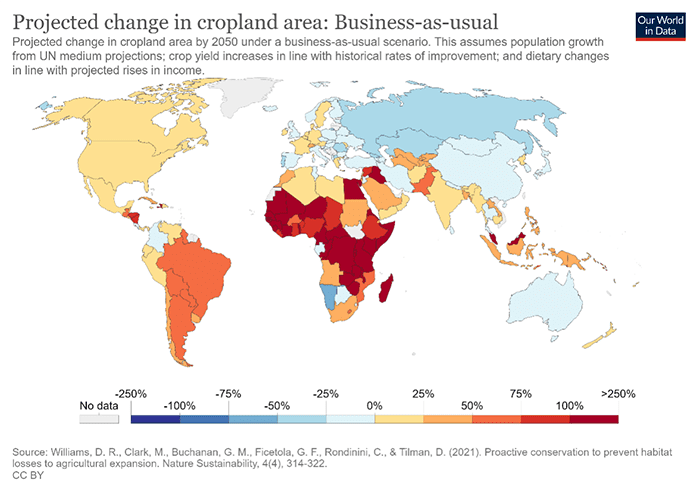
Figure 3: Source: https://ourworldindata.org/explorers/habitat-loss
In that sense, the widespread use of fertilizer has positive food security and biodiversity implications and the more judicious use of fertilizers in regions with large yield gaps may bring these benefits to locations presently suffering both food insecurity and unchecked habitat loss. However, excessive fertilizer applications can also have localized negative biodiversity impacts such as reduced diversity of soil biota, reduced plant diversity, off-farm impacts such as pollution of aquatic ecosystems and global contributions to greenhouse gas emissions and other forms of air pollution.
Nutrient management for food and biodiversity
So, what can be done to better reconcile the trade-offs and take advantage of the synergies between agricultural nutrient management and environmental, and particularly biodiversity, conservation? There have often been calls for reductions in fertilizer use and ‘excess nutrients’ from some in the conservation arena. And whilst there are undoubtedly farming systems and regions where nutrient management is excessive, and should be reined in, there are also many locations and instances where nutrient management should be increased, especially where there are considerable yield gaps.
What is needed is a rationalization and more efficient and targeted use of fertilizers, rather than a broadscale reduction that could undermine both food and nutrition security, and lead to the need for agricultural expansion to make up production shortfalls.
What might this actually entail?
- Agriculture often coincides with areas of high biodiversity, frequently involving the conversion of biodiverse natural ecosystems into production systems, ranging from smallholder plots to vast monocultural plantations. Whilst conversion-free agriculture should be an ultimate goal, we need far more effective land-use planning, that avoids the expansion of agriculture into areas of especially high biodiversity value.
- The ‘4R’ approach to nutrient management (right source, right rate, right time, right place), is a framework to deploy management practices that match nutrient supply with crop requirements and help minimize nutrient losses from fields and farms. Various ‘biodiversity-friendly’ actions can be incorporated into the 4R approach. This can include better understanding of the impact of different types of fertilizer and rates of application on various ecosystems and species and being aware of which features and areas at the field and farm level are particularly rich in biodiversity and adjusting nutrient management accordingly. For instance, farmers can incorporate buffer areas (e.g., strips of retained or planted native vegetation) around sensitive areas to prevent spray drift or run-off.
- Close yield gaps globally to produce enough food and to (at least potentially) spare land. However, this needs to be done in ways that are in themselves not environmentally damaging such as through sustainable intensification approaches that simultaneously raise yields, use resources efficiently and reduce environmental impacts.
- Restore degraded agricultural land and improve soil health and function through integrated soil fertility management.
- Increase agrobiodiversity (e.g. more crop diversity) and integrate approaches to nutrient management (e.g. using mineral fertilizers in combination with available organic fertilizers, crop rotations, intercropping, crop-livestock systems, tree crop and legume integration) that can be adapted to a wide range of local conditions.
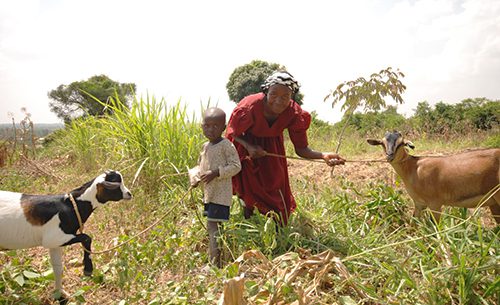
What are farmers already doing?
Farmers in Zambia and Malawi, in collaboration with the UN Food and Agriculture Organization (FAO) and the International Maize and Wheat Improvement Center (CIMMYT), are increasing their yields and incomes without undue reliance on hard-to-obtain mineral fertilizers by applying green manure cover crops, coupled with conservation agriculture practices such as minimum soil disturbance, crop residue retention and diversification through rotations and intercropping systems.
Livestock are a fundamental part of many smallholder farming systems around the world, providing a host of benefits ranging from draft power (e.g. pulling a plough or cart) to dairy products, meat and diversified income streams. One area where livestock are particularly critical for many farmers is by providing manure to help fertilize crops, especially in regions where mineral fertilizers are hard to access.
Many farmers augment and, in some cases, replace mineral fertilizer application through growing nitrogen-fixing legumes. This can involve a wide range of plant options, from acacia trees and shrubs that can provide firewood, to beans that can provide protein rich food for people and fodder for livestock.
Improvements in the accuracy and fine-scale resolution of precision farming technology, coupled with farmer and societal desires to increase resource-use efficiency and reduce losses of nutrients to the surrounding landscape, water bodies and atmosphere, have led to more farmers adopting this technology. Farms and fields can often look pretty uniform, but there is an enormous amount of variability in terms of soil structure and productivity, land topography, soil moisture, and pest concentrations, over relatively small distances.
Precision farming, with the use of ever more sophisticated data and computational power, enables the right amount of the right inputs to be delivered in the right locations. It can save farmers money on inputs costs, it can increase crop yields by matching fertilizer application to crop requirements, and (crucially for this discussion), in can reduce on-farm biodiversity losses, wider pollution and greenhouse gas emissions. Whilst precision farming can involve expensive infrastructure and therefore is more commonly used in wealthy industrial farming systems and countries, there are increasing initiatives to deploy precision farming techniques in developing world situations as well.
Who else can help and how?
Whilst farmers are at the frontline of nutrient management and can influence its positive and negative impacts, we all have a considerable stake in helping to ensure that food production generally and nutrient management in particular are conducted in a fully sustainable manner. Here are how some major stakeholder groups in the agriculture, industry, and conservation domains can communicate and contribute:
- Policy makers need to use the best available science and seek expert opinion from agriculturalists, the fertilizer industry and conservation professionals to develop stronger and more effective policies.
- The global fertilizer industry should work with conservation scientists to develop and promote fertilizers that retain their productivity-increasing capabilities but offers reduced nutrient losses to the environment.
- Conservation organizations can work with other stakeholders to establish where high levels of nutrient use may lead to disproportionate impacts on biodiversity, and with governments and the industry to develop incentives to help farmers implement more sustainable nutrient management.
- Farmers, farm advisers and service providers need support and incentives from governments, industry bodies and local and scientifically informed extension networks to enable sustainable management to occur and persist.
- Consumers can help by purchasing food that is produced using more sustainable management approaches, and by demanding transparent and accurate product differentiation. Governments, the entire food industry, producers and conservation operations need to support these efforts for a ‘nature-positive’ nutrient management accreditation and labeling scheme.
- Researchers in conservation, biology, agronomy, governance, farm technology and other areas can contribute by filling the many gaps in knowledge about nutrient management and biodiversity. Social scientists are urgently needed to help with understanding the socioeconomic and behavioral barriers for adopting biodiversity friendly nutrient management practices.
As I implied at the beginning of this article, agriculture and biodiversity too often trade-off against one another. Certainly, in some cases that may be unavoidable, but there are many ways in which agricultural systems can be highly productive without diminishing the natural systems and biodiversity that help underpin agriculture and upon which we all ultimately depend. What is really needed is a change in trajectory and a transformation of food systems in which all participants can play an active role and experience the benefits that this can bring. Nutrient management is only one aspect of agriculture (an important part, admittedly), but it is certainly a good place to start this reconciliation and cooperation.
Bibliographic references for this post are available on request.
About the author:
Dr. Simon Attwood is an expert in land conservation and management. He has helped to design and deliver the Australian Government’s Environmental Stewardship Program and more recently worked on projects in South East Asia and the Pacific to improve ecosystem services for rural community development and biodiversity conservation. Simon led the Ecological Intensification of Farming Systems team at Bioversity International, where he also co-developed the Agrobiodiversity Index, and was most recently Director of Conservation with WWF Singapore, where he worked on a range of conservation and sustainability challenges in South East Asia. Simon is also the lead author of the Scientific Panel on Responsible Plant Nutrition’s Biodiversity Issue Brief, which is available in Spanish as well as English.

